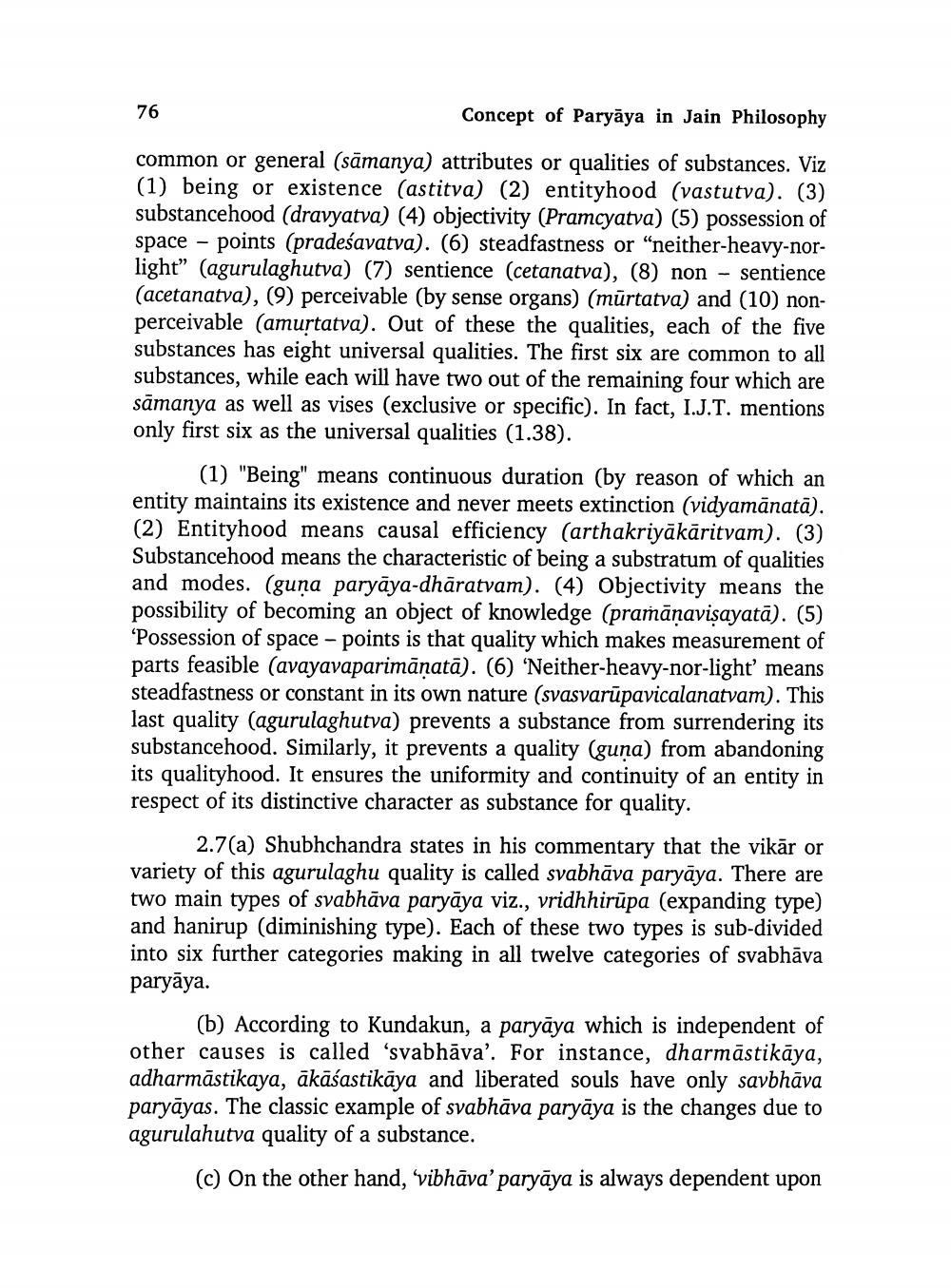________________ 76 Concept of Paryaya in Jain Philosophy common or general (samanya) attributes or qualities of substances. Viz (1) being or existence (astitva) (2) entityhood (vastutva). (3) substancehood (dravyatva) (4) objectivity (Pramcyatva) (5) possession of space - points (pradesavatva). (6) steadfastness or "neither-heavy-norlight" (agurulaghutva) (7) sentience (cetanatva), (8) non - sentience (acetanatva), (9) perceivable (by sense organs) (murtatva) and (10) nonperceivable (amurtatva). Out of these the qualities, each of the five substances has eight universal qualities. The first six are common to all substances, while each will have two out of the remaining four which are samanya as well as vises (exclusive or specific). In fact, I.J.T. mentions only first six as the universal qualities (1.38). (1) "Being" means continuous duration (by reason of which an entity maintains its existence and never meets extinction (vidyamanata). (2) Entityhood means causal efficiency (arthakriyakaritvam). (3) Substancehood means the characteristic of being a substratum of qualities and modes. (guna paryaya-dharatvam). (4) Objectivity means the possibility of becoming an object of knowledge (pramanavisayata). (5) 'Possession of space - points is that quality which makes measurement of parts feasible (avayavaparimanata). (6) 'Neither-heavy-nor-light' means steadfastness or constant in its own nature (svasvarupavicalanatvam). This last quality (agurulaghutva) prevents a substance from surrendering its substancehood. Similarly, it prevents a quality (guma) from abandoning its qualityhood. It ensures the uniformity and continuity of an entity in respect of its distinctive character as substance for quality. 2.7(a) Shubhchandra states in his commentary that the vikar or variety of this agurulaghu quality is called svabhava paryaya. There are two main types of svabhava paryaya viz., vridhhirupa (expanding type) and hanirup (diminishing type). Each of these two types is sub-divided into six further categories making in all twelve categories of svabhava paryaya. (b) According to Kundakun, a paryaya which is independent of other causes is called 'svabhava'. For instance, dharmastikaya, adharmastikaya, akasastikaya and liberated souls have only savbhava paryayas. The classic example of svabhava paryaya is the changes due to agurulahutva quality of a substance. (c) On the other hand, vibhava' paryaya is always dependent upon




